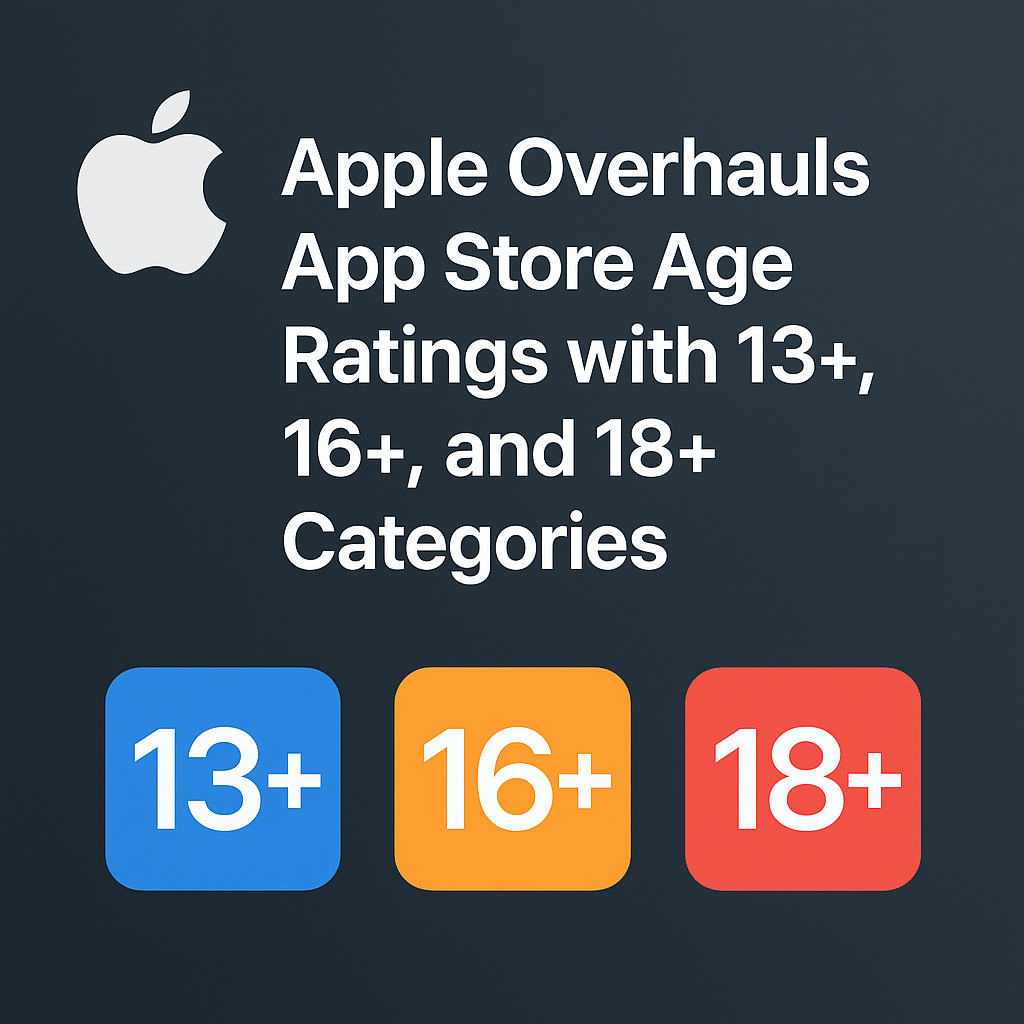Apple Introduces New Age Ratings for Apps to Make the App Store Safer for Young Users
Apple is making some big changes to how it rates apps on the App Store — and it’s all about giving parents more control and transparency.
Starting this fall, Apple is introducing its new age rating system for apps to include three new categories: 13+, 16+, and 18+, while retiring the older 12+ and 17+ labels. These changes are already live in the beta versions of iOS 26, macOS Tahoe, and other Apple platforms — with a full public rollout coming in September.

What’s Changing?
Apple’s updated system means developers will now be asked more specific questions about the content in their apps — like whether they include violence, wellness or medical topics, in-app controls, or user-generated content. Based on their answers, Apple will automatically assign an age rating to the app, which developers can later review and update if needed through App Store Connect.
This change isn’t just cosmetic. It’s part of a bigger effort by Apple to support child safety online, while helping parents make more informed decisions.
Why It Matters for Parents
With these new age brackets, parents will get clearer guidance when choosing apps for their kids or teens. App listings will now include more detailed information — like whether the app shows ads, allows user-generated content, or includes parental controls.
Apps that aren’t appropriate for a child’s age won’t be shown in certain parts of the App Store, like the Today tab or curated lists in Games and Apps.
Apple is also making it easier for parents to set up child accounts and share accurate age information — which can be passed (anonymously) to developers via a new API. This way, app creators can offer a safer and more age-appropriate experience without accessing the child’s actual birth date.
Why Developers Should Pay Attention
These new rules will affect how and where apps are featured — and potentially, how visible they are in the App Store. Developers who choose not to support the new system could see their app’s reach limited. On the flip side, those who do adopt the API and provide parental controls may see their apps gain trust with family users.
A Response to Rising Regulation
This move from Apple comes as governments — especially in the U.S. — are pushing tech companies to do more to protect kids online. Some new state laws could force platforms like Apple and Google to verify ages and get parental consent before apps are downloaded.
Apple’s solution keeps that responsibility with app developers, while giving them tools to do it responsibly — without compromising privacy.
Final Take
Apple’s updated age rating system is a smart step toward safer digital experiences for kids and teens. By giving both parents and developers better tools, Apple is aiming to build a more transparent, trustworthy App Store — just in time for back-to-school season.
You may be interested to know about AppleCare One. Please read the blog here

